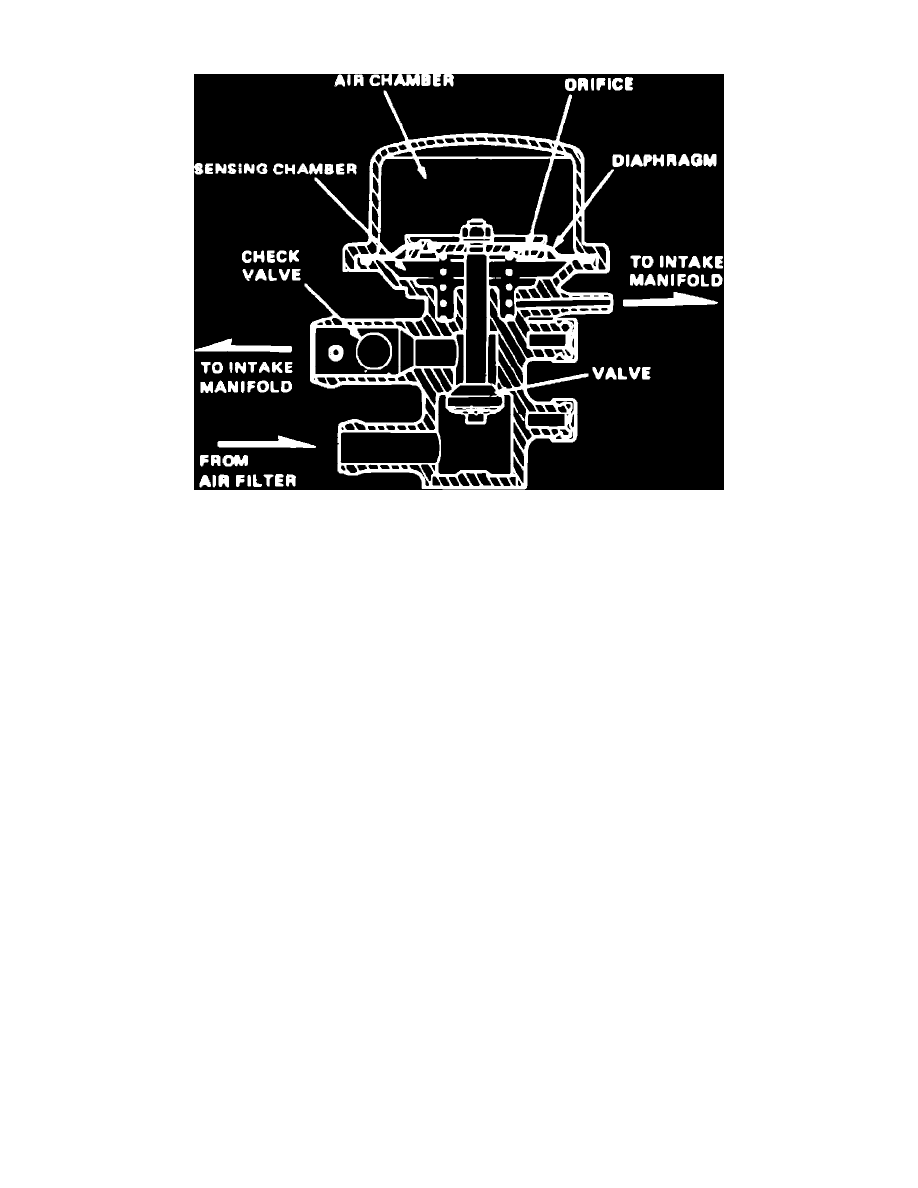Prelude L4-1829cc 1800 ES,ET (1983)

Anti-Afterburn Valve: Description and Operation
Fig. 70 Typical anti-afterburn valve.
The anti-afterburn valve, Fig. 70, lets fresh air into the intake manifold when manifold vacuum suddenly increases. The valve is sensitive only to sudden
increases in vacuum. The length of time it stays open is controlled by a diaphragm that senses change in manifold vacuum.
When manifold vacuum suddenly increases, the diaphragm/valve unit is pulled downward. air flow from the air chamber to the sensing chamber is
restricted by an orifice, creating a pressure differential on the diaphragm, which holds the valve open. This unbalanced condition last for a few seconds
until the pressure in both chambers is equalized by air entering through the orifice, then the spring pushes the diaphragm up, closing the valve.
The anti-afterburn solenoid valve, used on 1983-86 Prelude and 1984-86 Civic, is designed to cut off manifold vacuum flow to the top portion of the
anti-afterburn valve diaphragm. On all models except 1985-86 Civic with automatic transmission, when the anti-afterburn valve does not open because
there is no vacuum difference on both sides of the diaphragm. On 1985-86 Civic with automatic transmission, the anti-afterburn control solenoid valve
is off forfour seconds after cranking the engine.
The anti-afterburn control solenoid valve is on only when coolant temperature is below 158 deg. F, and vehicle speed is below a predetermined speed or
RPM.
An air valve is used on 1984-86 Civic. Manifold vacuum applied to the air valve opens the air passage when manifold vacuum is above set vacuum of
the control switch.
The air control solenoid valve, used on 1984 Civic with manual transaxle is designed to bleed manifold vacuum to the atmosphere. When solenoid valve
is open, it takes a higher level of vacuum to open the control switch.
The vacuum control valve is used on 1984 Civic high altitude and California 1500 with automatic transaxle. When engine coolant temperature exceeds
the set temperature of thermovalve D and manifold vacuum suddenly increases, the diaphragm valve is opened, which allows manifold vacuum into the
air valve.
